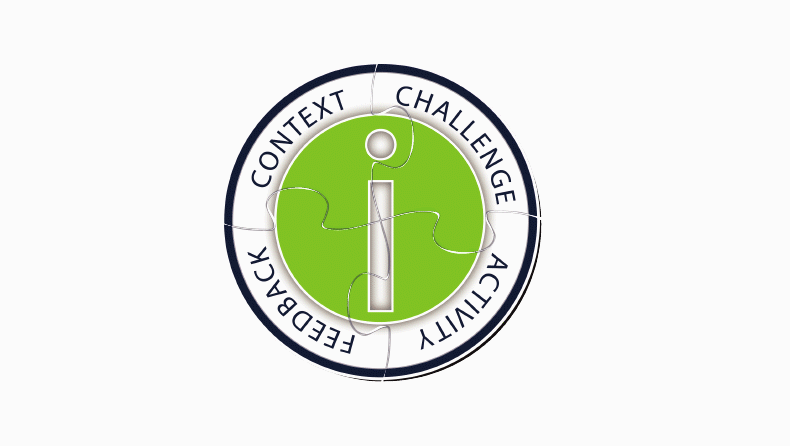Blog
Deeper Learning™: How to Actually Get the Results You Care About
This article continues the series looking at CCAF through the perspective of key considerations in developing online training. Previous entries have ...


4 Lenses To Bring E-Learning Instructional Design Into Focus: Part 3 - Individualization
By Ethan Edwards | June 21, 2022 | Custom Learning | 0 Comments
This article continues the series looking at CCAF through the perspective of key considerations in developing online training. Previous entries have examined the model in terms of interactivity and adult learning principles. Here we discuss the CCAF approach in terms of how it powerfully enables true individualization.
Part 1: Interactive Learning | Part 2: Adult Learning
A quick review of CCAF

Allen's CCAF Design Model, covered in-depth in Michael Allen's Guide to e-Learning, 2nd Edition, consists of four components of instructional interactivity which include:
Context: A meaningful situation
Challenge: A stimulus or urgency to act
Activity: Consequences of user actions and guidance as needed
Feedback: A physical gesture (in response to the challenge)
This model is rooted in driving performance change for building Meaningful, Memorable, Motivational, and Measurable custom learning experiences that are authentic representations of real-world settings, choices, skill applications, and consequences that employees face in their jobs.
What is individualized learning?
“Individualized learning” has been a goal of e-learning since its earliest days. At its root, individualized instruction is a method of teaching in which content, instructional technology, and learning pace are based upon each learner's abilities and interests. While this definition is accurate, it fails to really capture the power of achieving true individualization.
Much e-learning design is content with the idea that individualized learning is working by yourself at your own pace. This may be individual learning, but it greatly falls short of true individualization.
What does an individualized learning model look like?
With true individualization, it goes much further than simply differentiating pace. Individualization actually seeks to adjust treatment, challenges, and content to match the specific needs of each learner. This cannot be specified in advance, but the instruction must adapt based on each learner’s performance
Let’s take a look at a typical e-learning structure in terms of individualization. The most common structure is the tell-and-test model, where content is presented followed by preset questions at pre-determined intervals, like this:
By contrast, we can see what individualized learning experiences look like for three potential learners:
We have three learners, each working alone, yet each having precisely the same experience. This is because the sequence and content were set in stone as part of the design. The questions are not used to gain insight into what the learner is thinking. Instead, the questions and tests are just knowledge checks, the findings of which are ignored in determining the best instruction.
In contrast, let’s take a look at CCAF as a building block of an individualized module:
A number of things may happen:
- The learner might encounter helpful consequences and content as part of the Feedback, determined by the learner’s performance.
- The learner might even choose to seek more information while trying to meet the challenge.
- The learner might breeze right through and move to the next interaction.
Individualized e-learning leads to better learning experiences
Because each CCAF interaction starts with challenging the learner, there is an immediate opportunity to adapt the experience based on individual differences. So our three learners might experience quite different paths, individualized to each learner’s needs:
It is important to remember that no individualization can occur until the learner does something. Even with “required” or ‘compliance” learning modules, the CCAF approach delivers content integrated into and presented in the context of each learner’s performance.
CCAF allows you to present the same content to every learner as needed. But the individualization occurs in that the most significant presentation of content comes in feedback after the learner has engaged and taken action. Even if the content is uniform, the dialog that brings it to life is individualized according to each learner's actions. This tailoring and personalization of e-learning is transformative; putting each individual learner in the center of content acquisition. Using both CCAF and individualized learning models, we can turn bored learners into engaged, enlightened participants.

About the Author: Ethan Edwards
Ethan Edwards draws from more than 30 years of industry experience as an elearning instructional designer and developer. He is responsible for the delivery of the internal and external training and communications that reflect Allen Interactions’ unique perspective on creating Meaningful, Memorable, and Motivational learning solutions backed by the best instructional design and latest technologies.
Comments
Would you like to leave a comment?
Related Blog Posts
.png?width=316&name=2023%20Blog%20Covers%20and%20In-Line%20Graphics%20(49).png)
By: Ethan Edwards | May, 2023
Category: Custom Learning, Dr. Michael Allen

Blog
Making e-Learning Success Through Failure
This article continues the series looking at CCAF through the perspective of key considerations in developing online training. Previous entries have ...
By: Ethan Edwards | May, 2014
Category: Custom Learning

Blog
What's So Bad About Boring e-Learning?
This article continues the series looking at CCAF through the perspective of key considerations in developing online training. Previous entries have ...
By: Ethan Edwards | Oct, 2014
Category: Custom Learning


